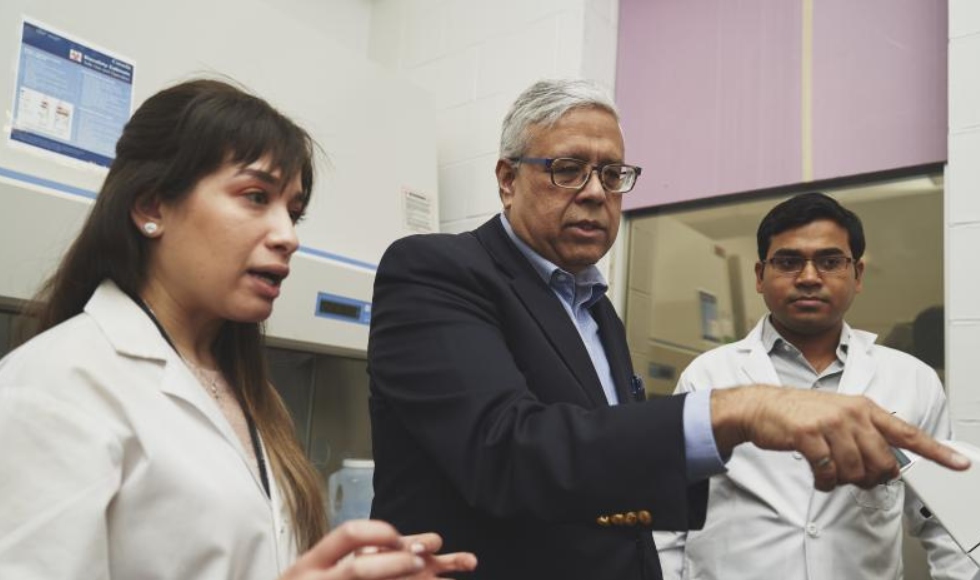McMaster engineers pivot 3D cell printing technology to help COVID-19 research

Researchers Sarah Mishriki, Ishwar K. Puri and Rakesh Sahu are part of a team that has found a way to use 3D printing technology to aid in drug screening. Photo taken in March 2019 by Jin Lee.
BY Jessie Park, Faculty of Engineering
March 23, 2020
Last year, a team of McMaster engineers developed a way to use 3D printing technology to create artificial tumours to help researchers test new drugs and therapies, which could lead to personalized medicine.
Now, they’re looking at using that technology in the global mission to find treatments for people with COVID-19.
The novel coronavirus disease continues to spread worldwide, with early research showing significant impact in lung efficiency in people who recover from the virus.
“If there’s a drug that can be developed to fight the infection and improve outcomes for people, our technology can be used to speed up that process,” says Rakesh Sahu, research associate and adjunct assistant professor in the department of materials science and engineering.
The technology works by rapidly 3D printing cells to mimic human tissue that needs treatment – a wound, infection or tumour, for example. The tissues are then tested in labs to see how a certain drug will heal it in real time.
It can print these 3D cell aggregates in three hours, while the industry standard can take two to three days.
“The significant improvement in formation time is crucial for situations where high throughput screening is required to develop a drug to provide therapy during a pandemic, such as the recent case of coronavirus,” says Sahu.
He says the team is seeking opportunities to start working with COVID-19 affected cells.
The project, led by Ishwar K. Puri, a professor of mechanical engineering and dean of engineering, is funded by the Natural Sciences and Engineering Research Council (NSERC). The team continues to work closely with the McMaster Industry Liaison Office (MILO) to open new avenues to commercialization.
“The team’s really moving in the way that they’re able to adapt the technologies they have as real needs come up,” says Glen Crossley, the associate director of business development and intellectual property at MILO.
With Crossley’s guidance, the team has submitted a patent for the technology, in addition to a Lab2Market proposal. They are now working on securing additional funding through NSERC’s Idea to Innovation grant program.
In collaboration with Jeremy Hirota, assistant professor in respirology in the department of medicine, and other researchers in McMaster’s Faculty of Health Sciences, the team is fine-tuning the cellular structures it develops to understand respiratory wound healing.
Sahu says the research was only possible through the massive collaboration between engineers, applied physicists, health scientists, commercialization experts and PhD students Sarah Mishriki and Tamaghna Gupta.


